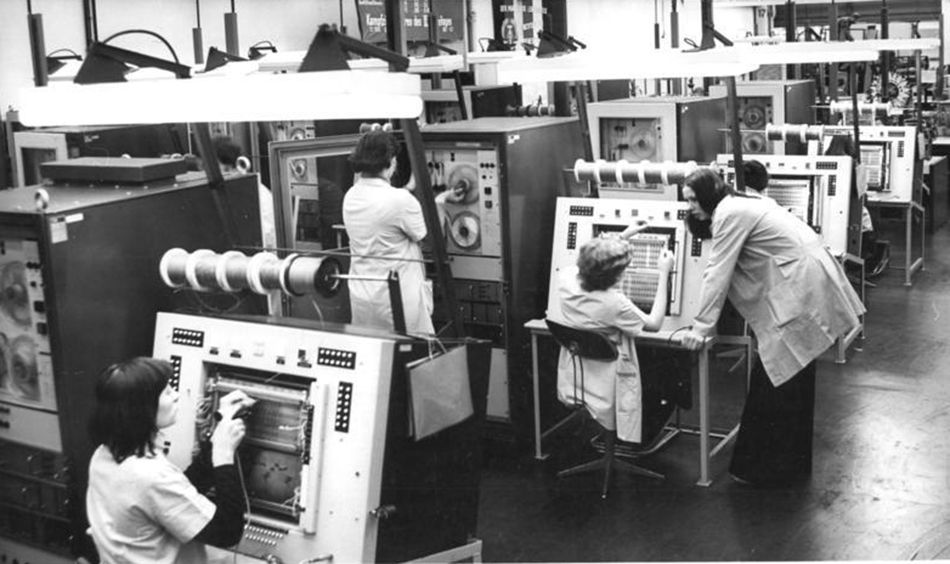

The standardized system of electronic computers, was developed and manufactured at VEB Kombinat Robotron, the largest electronic manufacturer in the former German Democratic Republic.
High-tech companies are laying off workers at record levels. More than 93,000 tech positions have been eliminated this year, and it is only the second month. These cuts include 6,650 job losses announced by Dell and the layoff of 1,300 Zoom employees in early February. (crunchbase.com, Feb. 15, 2023)
The abrupt reduction of high-tech positions started last fall. Amazon, Lyft and Meta, the parent company of Facebook, unleashed major cuts against their workforce in November. Twitter slashed several thousand jobs one month prior. Both the app company Robinhood and Snap, the parent organization to the social media platform Snapchat, began downsizing last August.
Significant high-tech job losses occurred again in January. Microsoft announced they were reducing 10,000 positions; IBM declared they were cutting 3,900 jobs, and Alphabet, parent company of Google, let 12,000 workers go. (cbsnews.com, Feb. 7, 2023). PayPal, Spotify and Wayfair laid off tech workers in January.
The layoffs disproportionately impact Black and Brown tech workers, especially workers from other countries. The job losses jeopardize the immigration status of many families who depend upon visas as a condition to reside in the U.S. As pointed out in a Feb. 2 Workers World article, “A sign of capitalist decline: Pink slips hit tech workers hard,” many tech workers have H-1B visas. Laid-off H-1B holders need to find an H-1B sponsoring job within 60 days of losing the job they had or face deportation if they don’t leave the U.S. within 10 days of losing their H-1B status.
Nearly every tech company has made considerable cuts in recent months, and the situation does not seem to be improving anytime soon. Some of the companies mentioned above already have plans to eliminate more jobs by the end of the year. Tech industry downsizing has affected tech workers outside of the tech companies; the financial corporation Capital One eliminated 1,100 tech positions on Jan. 19.
Under capitalism, technology and automation are used to maximize profits for the ruling class, destroying millions upon millions of careers in the process.
Technology under socialism helps workers
Technology and automation can and should be used to boost material conditions and make labor more desirable. In contrast to being a job killer under capitalism, technology has been used to help people in socialist countries. Under a planned economy, it can prevent workers from experiencing “alienation” from their own labor, which Karl Marx famously highlighted as a feature of the capitalist system.
The standardized system of electronic computers, was developed and manufactured at VEB Kombinat Robotron, the largest electronic manufacturer in the former German Democratic Republic.
One of the best examples of technology being used to improve working conditions was in the former German Democratic Republic. In 1976, the GDR launched a five-year plan that included a “micro-electronics industry.” This was followed by an extensive introduction of computers and robotics, which raised productivity and reduced the drudgery of physical labor. What is most impressive is how the GDR was able to introduce electronics and automation while also increasing wages and without creating any unemployment. (Liberation, December 1989).
Horst Sindermann, a former Socialist Unity Party leader and President of the GDR’s Volkskammer (“People’s Chamber”) from 1976 until 1989, bragged about the GDR’s ambition to introduce technology in his report: “On the directives for the five-year plan for GDR’s national economic development 1976-1980, issued by the 9th Congress of the SUP of Germany.”
Sindermann had stated: “The application of scientific principles to the organization of production is assuming growing importance. It helps us to rationalize individual jobs. Its results must contribute to greater continuity in production, the effective use of working hours and the gradual establishment of working conditions fully suited to the type of socialist personality that is now developing.
“Moreover, it is essential to reduce the number of jobs involving heavy manual and monotonous labor or health hazards due to heat, noise, dust and other noxious influences. . . . It is one of the lasting accomplishments of our socialist system that a secure way of life and secure employment are guaranteed for all working people.”
Socialist countries prioritize human necessities such as employment, housing and health care. Capitalist governments, on the other hand, do not share these priorities. Capitalists are driven by a desire to continuously make profits.
Socialists and communists are motivated by the yearning to help humanity. That is why the former GDR was able to utilize technology to increase employment, at the same time the U.S. ruling class was using it to drive down wages and diminish job opportunities.
Capitalist overproduction, not technology, is to blame for the ongoing layoffs within the tech industry. In his 1991 article, “IBM and the high-tech crisis,” Workers World Party founder Sam Marcy made this exact point: “It’s not true that technology itself has grown to such dizzying heights that it cannot be controlled or managed. It can be. What stands in the way is private ownership and the struggle for superprofits, which make the productive forces in capitalist society unmanageable and lead to periodic crises.”
Boston, April 20, 2025 The leadership of the Democratic Party nationally and especially in Massachusetts…
Hamas – Islamic Resistance Movement made the following call, “Gaza cries out to you —…
The centennial of the birth of Malcolm X, also known as El-Hajj Malik El-Shabazz, is…
In a courageous act of solidarity with the Palestinian people, a Moroccan port workers’ union…
Buffalo, New York A large group of demonstrators marched on the Buffalo ICE (U.S. Immigration…
In the 1950s, when Japan and much of Europe was in ruins, the U.S. accounted…